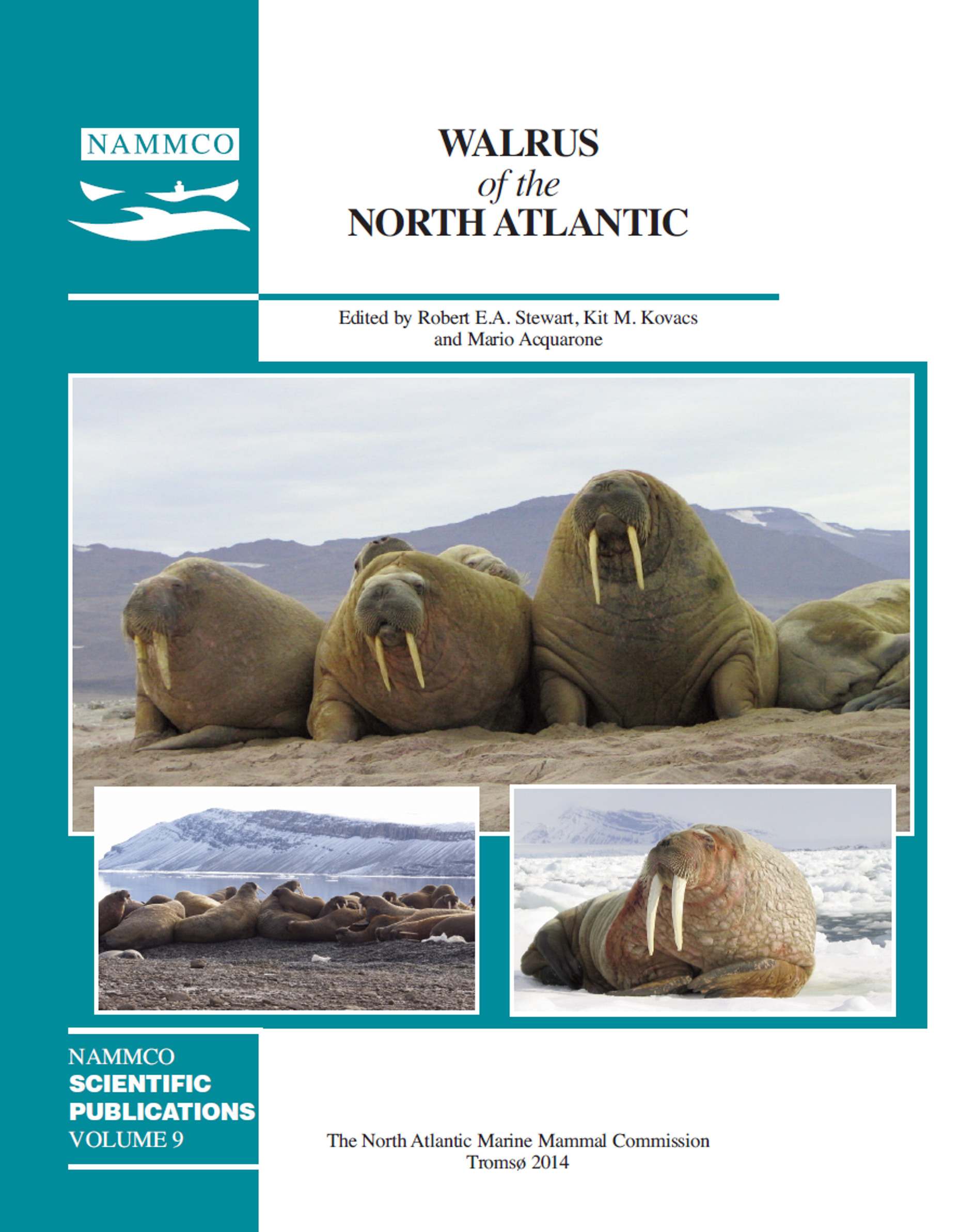Prolonged chemical restraint of walrus (Odobenus rosmarus) with etorphine supplemented with medetomidine
DOI:
https://doi.org/10.7557/3.3015Keywords:
immobilisation, chemical restraint, walrus, Odobenus rosmarus, etorphine, medetomidineAbstract
Physiological studies involving the use of isotopic water required chemical restraint of free-ranging walruses (Odobenus rosmarus) for several hours. In August 2000, six male walrus (total body mass: 1050–1550 kg) were immobilized in East Greenland by remote delivery of 8.0–9.8 mg of etorphine and subsequently restrained for up to 6.75 h by administration of medetomidine. The effects of etorphine were reversed with 10–24 mg diprenorphine. After termination of the etorphine-induced apnoea, lasting an average of 15.8 min (SD = 9.7, range = 9.5–35.2 min, n = 6), the animals were initially given 10–20 mg medetomidine intramuscularly. The initial dose was further augmented by 5 mg at intervals of 5 min. In two cases, when medetomidine was administered through a catheter inserted in the extradural vein, the animal became instantly apnoeic and regained respiratory function only after intravenous injection of the prescribed dose of the antagonist atipamezole and of the respiratory stimulant doxapram. After an average of 3.5 hours of immobilisation, rectal temperature began to increase and it is conceivable that this is the factor that will ultimately limit the duration of immobilisation. The animals became conscious and fully mobile shortly after an intravenous injection of a dose of atipamezole approximately twice the mass of the total dose of medetomidine given during the procedure followed by 400 mg of doxapram. It is concluded that medetomidine appears to be a suitable drug for chemical restraint of walruses for time-consuming procedures following initial immobilisation by etorphine. With animals of total body mass around 1,000–1,500 kg, the drug should be given intramuscularly in 10–20 mg increments (total mass 10–60 mg) until the breathing rate falls to approximately 1 min-1. At this level, breathing is maintained and animals do not respond to touch or injection.Downloads
Published
2014-12-15
How to Cite
Griffiths, D., Born, E. W., & Acquarone, M. (2014). Prolonged chemical restraint of walrus (<i>Odobenus rosmarus</i>) with etorphine supplemented with medetomidine. NAMMCO Scientific Publications, 9, 361–369. https://doi.org/10.7557/3.3015
Issue
Section
Articles





